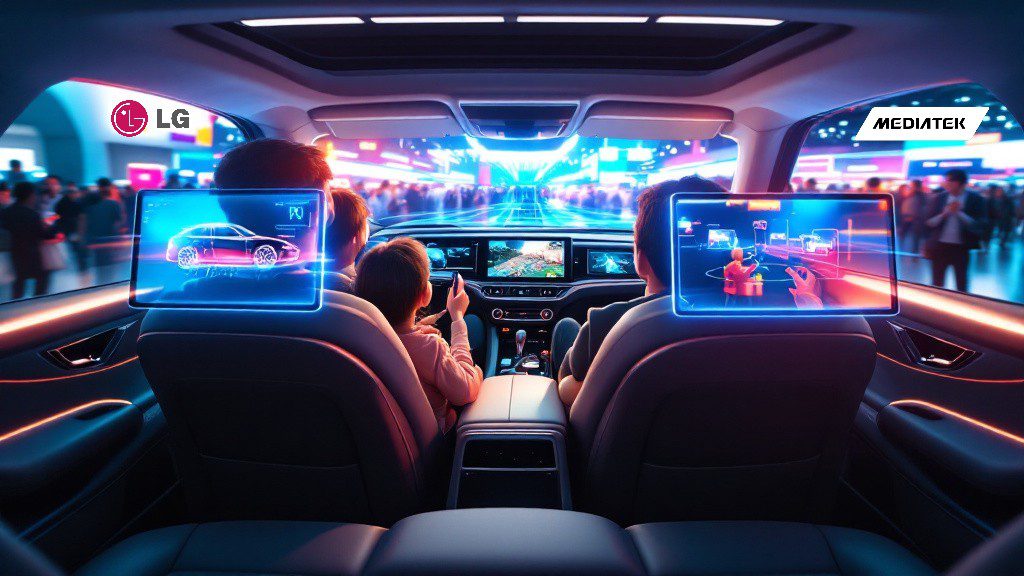In a groundbreaking development at Auto Shanghai 2025, LG Electronics and MediaTek have unveiled the world’s first Android-based Concurrent Multi-User (CMU) framework for in-vehicle infotainment systems. This revolutionary technology enables passengers to simultaneously use different applications across multiple displays through a single operating system, marking a significant advancement in automotive entertainment solutions.
The innovative CMU framework, built on Google’s Android Automotive OS (AAOS), represents a substantial leap forward in in-car technology. By eliminating the need for multiple Android Virtual Machines traditionally required for separate displays, the system consolidates all functions into a unified operating system. This consolidation significantly reduces CPU, memory, and storage demands while enhancing overall system performance.
At the heart of this technology lies MediaTek’s Dimensity Auto Platform system-on-chip (SoC), which efficiently manages multiple displays through a single Android OS instance. The integration enables seamless content distribution across Centre Information Displays and Rear Seat Entertainment systems, ensuring smooth operation even during demanding tasks.
The framework introduces three key innovations: resource efficiency through reduced hardware complexity, personalised viewing experiences for individual passengers, and enhanced safety compliance that prioritises driver-focused functions. These features maintain system stability whilst allowing drivers to access navigation systems while passengers simultaneously stream content or play games.
Eun Seok-hyun, president of LG’s Vehicle Solution Company, highlighted the significance of this development: “Our commitment to revolutionising in-vehicle experiences through CMU is a major step toward transforming vehicles into connected living spaces.” This statement underscores the growing importance of software-defined vehicles in the automotive industry.
The collaboration between LG and MediaTek demonstrates the crucial role of semiconductor-software integration in modern infotainment systems. The Dimensity Auto Platform’s capabilities in handling multitasking and high-resolution content position it as a fundamental component for next-generation mobility solutions.
As vehicles increasingly become “living spaces on wheels,” the CMU framework addresses the automotive industry’s growing need for advanced connectivity and entertainment features. The system’s design allows for future updates, ensuring long-term compatibility with emerging applications and services.
Looking ahead, both companies plan to expand their partnership by focusing on AI-driven personalisation and enhanced cybersecurity for infotainment systems. The integration of edge-based AI for voice recognition and predictive analytics suggests a future where the distinction between automotive and consumer electronics continues to blur.
The debut of this technology at Auto Shanghai 2025 positions the CMU framework as a potential industry standard, highlighting the increasing role of software innovation in shaping the future of automotive technology.









